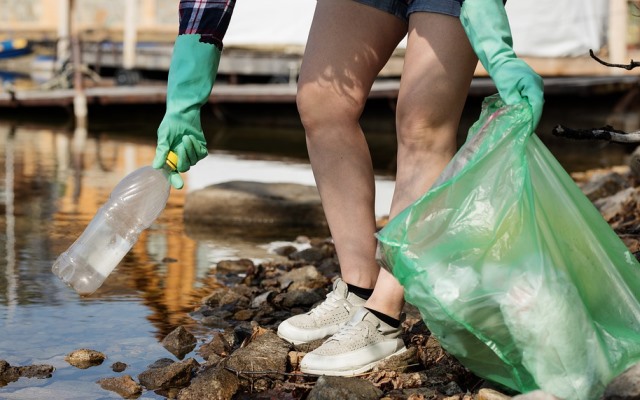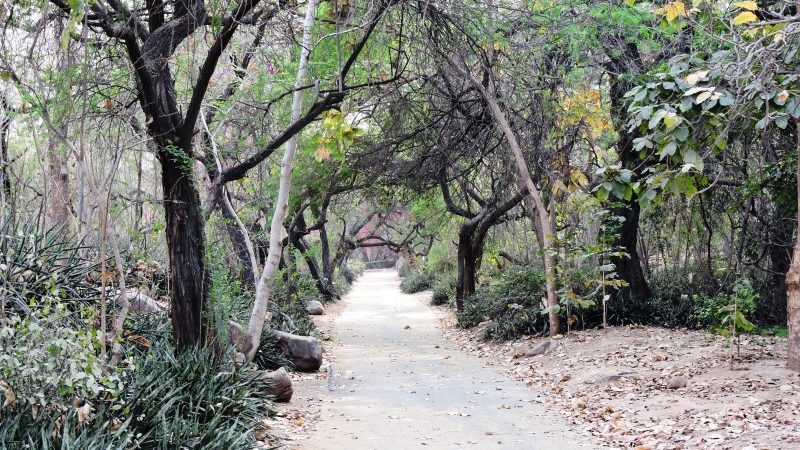10 Ways to Reduce Your Plastic Use and Help the Environment

Plastics were once seen as miraculous materials that catered perfectly to our culture of convenience – cheap, lightweight, mass-produced and easy to discard. However, we soon realised that plastics are a lot harder to get rid of, than to create.
Most plastic materials never completely degrade; they remain in our environment, slowly being broken up into smaller and smaller pieces. While recycling programmes have been put in place, it is estimated that just 5% of plastics are recycled effectively. 40% of them end up in landfill and over 30% in the environment. The rest is burnt, creating energy but also consuming more fossil fuels in order to manufacture new plastic materials that are forever demanded by our economies.
A preliminary analysis reveals that just about 5 countries are responsible for over half the total amount of waste in our oceans. These are China, Indonesia, the Philippines, Thailand and Vietnam. It is also found that 80% of plastic waste in our oceans originates on land and three quarters of that comes from uncollected waste or litter. This plastic leakage results in 8 million metric tons of plastic materials entering our oceans every year. It is now predicted that by 2050, there will be more plastic than fish by weight in our oceans.
What can we do? The best way to reduce the amount of plastic waste entering our oceans is to simply cut it at source and reduce the amount that is actually used in the first place. This has the added benefit of reducing the consumption of fossil fuels that are used to create plastics. As consumers, we can choose to buy products without packaging, carry our own water bottle, refuse straws and use our own reusable shopping bags.
Here are 10 everyday acts you can adopt to reduce the amount of plastic waste you generate:
1. Stop Buying Plastic Bottles
Water and other beverage bottles, along with their caps, are the biggest combined source of plastic waste in our oceans. Every minute, over a million plastic bottles are bought across the globe and just a small percentage are recycled. The alternative is simple – a reusable stainless steel or glass bottle that can be used again and again. These bottles are rugged and easily cleaned, and can easily be thrown into a bag or left wherever you need a drink – at the office or in the car.
What about in hotels and restaurants that offer you a plastic bottle of water? Ask for a clean glass instead and explain them why you are doing it. Their business depends on a clean local environment and they will immediately see their benefit in it.
2. Carry a Reusable Shopping Bag
On average a plastic bag is used for just 12 minutes, and yet can persist in the environment for decades. They are difficult to recycle and have very little value even if collected, making them extremely difficult to manage effectively. The choice here is simple – buy your own shopping bag that you can use again and again.
Cloth bags are perfect for all sorts of uses and can easily be folded away and carried around for when you need it. And don’t be afraid to say no when offered a plastic bag when shopping – it is the perfect opportunity to again explain why you are turning it down.
3. Say No to Plastic Straws
According to one estimate, over 500 million straws are used every day in USA alone, none of which are recyclable due to the materials used and their small size. Whilst many end up in landfill or are burnt, a huge amount leaks into the environment – plastic straws are one of the commonest sources of ocean waste.
An alternative? Well, first ask yourself if you really need that straw. If the answer is really yes, then carry a reusable and washable metal or bamboo straw with you. Bamboo has the added benefit of being extremely fast growing and perfect for rehabilitating degraded forest land.
4. Use Your Own Takeaway Cup
Styrofoam disposable cups and their plastic lids are a significant source of ocean waste. The foam material gradually breaks down, but the remaining particles can persist for decades. And neither the cups nor the lids are easily recyclable.
Once again, the figures are extraordinary – it is estimated that 25 billion expanded polystyrene foam cups are used every year in the USA alone; the figure for the entire globe is incalculable. If you must get a takeaway coffee, then bring your own reusable and insulated cup – not only will it reduce your plastic footprint, but it will also keep you coffee hotter for longer! Even Starbucks is thinking of doing it!
5. Carry Reusable Containers
Much like disposable coffee cups and their lids, plastic styrofoam food containers litter beaches across the globe and are found drifting in the furthest reaches of our oceans. Making a switch to your own containers is easy to do – ideally glass or metal containers, but even non-single use plastic containers are better than nothing – it is at least reusable! Get in the habit of having a set of containers, a cloth shopping bag and a water bottle with you wherever you need them.
6. Quit Smoking
Cigarette butts are made of cellulose acetate fibre and can take decades to break down in the environment. Studies have divided the number of butts found by 20 – the typical number of cigarettes in a pack – but when considered individually, butts were in the top 5 sources of plastic pollution. So its not just your lungs and the lungs of your loved ones that you are polluting with your smoking habit. Your habit of cigarette smoking is also putting the health of the Planet and its oceans at grave risk. Quit Smoking Today!
7. Consider Food Packaging
Food wrappers and packaging are the single greatest source of plastic pollution according to many studies. It is also one of the more difficult sources of waste to tackle – at least as a consumer. Whilst plastics serve a vital function in preserving food and reducing waste, the entire food industry is guilty of massively over packaging products to the point of absurdity – plastic-wrapped ready-peeled bananas would be funny if they weren’t so frightening in their blatant disregard of the environment.
The best way to make a difference is to try and avoid buying products with plastic packaging, or at least the minimum necessary. Try to buy in bulk whenever possible – buy big refills rather than small packets – and look for alternative packaging such glass or cardboard. And use your own containers and bags whenever possible.
8. Avoid Micorbeads
Plastic microbeads are added to face scrubs, toothpastes and body washes, as abrasives, and are responsible for giving you that freshly-scrubbed feeling. However, their small size means they readily enter the oceans through our sewer systems, and are easily ingested by marine organisms. Scientists have discovered that these microbeads, along with other small particles of plastic, are finding their way into the marine food chain.
We humans, as the apex predator of the seas, are now ingested these plastics ourselves. Consequently, governments in many countries are now starting to ban microbeads, but they are still being sold in much of the globe. Avoid them by looking for polythelene and polypropylene in the list of ingredients.
9. Get Involved
The biggest threat to our oceans is ignorance, and without education and awareness campaigns, and the advocacy for the marine environment, we have no hope of conserving the oceans for future generations. As consumers, you can make a difference – you can vote with your wallets by supporting businesses that use less plastics; talk to restaurants, cafes and others in the food industry about alternatives to plastics; and act as ambassadors for a reduction in the consumption of plastics.
You can contribute to organisations that are making a difference, participate in beach and ocean cleanups and help spread the word about plastic waste. The problem is very real, but there are solutions and the more people that are willing to stand up and be counted, the better.
10. Go Beyond the 3R’s
Incorporating the 3 R’s – Reduce, Reuse and Recycle – into your life will certainly help you lead a more sustainable lifestyle. But it is time to go even beyond these 3 R’s and add at least two more to it. These are Refuse and Repair. Refuse all single-use disposable products and packaging. It makes no sense to use a material designed to last forever for a product that’s designed to last a few minutes.
Repair your broken appliances and instruments instead of simply throwing them away. There is already a world wide #RighttoRepair Campaign urging consumers to buy only those products that can be easily repaired. If all products and appliances can be repaired and fixed to prolong their life, it would make a big difference for ensuring a reduction in resource use.
We urge to follow the above 10 simple steps for ensuring that you optimize your ecological footprint and help #beatplasticpollution.




One thought on “10 Ways to Reduce Your Plastic Use and Help the Environment”